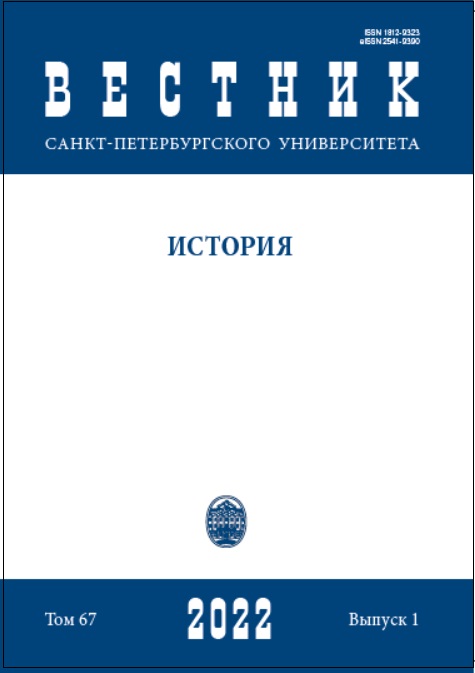The Geopolitical Context of the Rus’ Raid on Seville
DOI:
https://doi.org/10.21638/11701/spbu02.2022.101Abstract
The article offers a possible explanation for the raid of the Rus’ on Seville in 844 and also attempts to compare this event with the embassy of the Rus’ to Constantinople and Ingelheim, and with their raid on Amastris. These events, taken as a part of a complex geopolitical picture of the “long middle” of the 9th century, show the origin and nature of the emerging group of the Rus’ people. This period started with the renewed Muslim onslaught on Europe through the Byzantine holdings in Asia Minor and Italy in the 820s–830s, and finished in the middle of the 860s with the Byzantine victory over the Abbasids. Other important events of this time were the Great Schism; victories of the Byzantine Orthodoxy over Catholicism and heretics in Great Moravia, Bulgaria and Asia Minor; and the first baptism of the Rus’. This geopolitical background was complemented by the collapse of the Carolingian Empire and the beginning of the German Drang nach Osten. During this time, a small group who identified itself as the
Rus’ first in 838, came into being. Its main goal was to explore new trade routes to the Muslim world bypassing Khazaria. However, eventually they discovered an opportunity of pillaging Byzantium and its allies in Andalusia. The result of their actions, which were probably coordinated form one center in Southern Denmark, was their acquisition of “homeland” in the North of Eastern Europe: a land that was given its accidentally emerged name “Rus’”.
Keywords:
the Rus’ people, the raid on Seville, eastern sources, “the island of the Rus’”, geopolitics
Downloads
References
References
Downloads
Published
How to Cite
Issue
Section
License
Articles of "Vestnik of Saint Petersburg University. History" are open access distributed under the terms of the License Agreement with Saint Petersburg State University, which permits to the authors unrestricted distribution and self-archiving free of charge.





